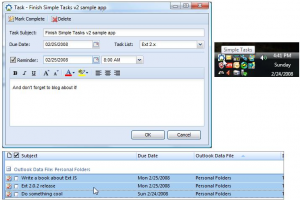Rise of Javascript
Since its birth in 1994, Javascript has come a long way. Today it is one of the most popular programming languages on the web. Javascript has been on the rise and is growing faster since AJAX based applications reignited professional developer interest. It is now possible to it to write applications on the server, the mobile devices, on the browsers (add ons and plugins), inside PDF documents, even in some remote controls and many more to come.
Javascript application development in Mobile devices

Build Native Applications using Javascript
Palm’s new OS is the first mobile platform to be built from the ground up to combine standard technology, innovation and integration. At its core, webOS leverages several industry-standard technologies, including web technologies such as CSS, XHTML and JavaScript. You can think of webOS applications as native applications, but built from the same standard HTML, CSS and JavaScript that you’d use to develop web applications. Palm has extended the standard web development environment through a JavaScript framework that gives standardized UI widgets, and access to selected device hardware and services.
Javascript can be used on the iphone too. The HTML 5 specification provides a new mechanism for client-side data storage: JavaScript database support. This feature shipped originally with iPhone OS 2.1. When you use “Add to Home Screen” from the “+” button on Safari for iPhone, a web application with a manifest defined (per the HTML5 spec) will be saved with any cached resources. It is also worth noting that these features have not been added to Safari on Mac OS X or Windows.
Desktop Application development using Javascript
Adobe AIR is a cross-platform desktop runtime created by Adobe that allows web developers to use web technologies to build and deploy Rich Internet Applications (RIAs) and web applications to the desktop. This means what you can write you application using Javascript and then let AIR to figure out how to run your code in Windows, Linux, Mac and future operating systems.

Desktop App using Javascript
The application shown in the pic is written using Javascript, HTML and CSS. It uses the ExtJS library. Javascript can be used to dock the application in the taskbar, delete and modify files on the hard drive, communicate to different server, use AJAX, etc. You can even use flash within your app to make the application look and feel much better. This gives the web developer good access to a desktop.
Server side Scripts using Javascript
Server side JavaScript has been around for a long time and potentially offers some unique and interesting advantages over other languages (like PHP, ASP, etc) because the same language is spoken by both client and server. There are numerous attempts to bring server side javascript to the masses. Server side Javascript has to do much more than what it has to do at the browser level with access to databases, files, and networking, as well as logging, process management, scalability, security, integration APIs, and extensibility. You can even use your own javascript libraries on the server jQuery, dojo, Ext JS, prototype, etc.
Javascript in other places
– Adobe reader (from v3.02) supports Javascript for forms and basic operations. SOAP support has also been included since version 7.0. There is also access to the entire 3D Javascript API. More details on using Javascript is available here
– Open office application suite supports Javascript to write macros. This move looks like a sensible addon given the usage of VBScript in MS Office suite.
– Apple’s Dashboard Widgets, Microsoft’s Gadgets, Yahoo! Widgets, Google Desktop Gadgets are implemented using JavaScript.
– The oddest one in this list will have to be the Philips Remote Control which uses Javascript
ECMAScript 4 (ECMAScript Harmony)
Javascript has been relatively stable since the third edition of ECMAScript published in 1999. Features under discussion for a future edition originally ECMAScript 4 now ECMAScript Harmony include Classes, a module system, static typing and Optional type annotations, Generators, Iterators, Destructuring assignment, algebraic data types. Well if you think this is ambitious you should see the original ECMAScript 4 which had more semantic and syntactic innovation. Packages, namespaces and early binding from ECMAScript 4 are no longer included for planned releases with ECMAScript Harmony. The intent of these features is partly to better support “programming in the large”, and to let programmers sacrifice some of the script’s ability to be dynamic for performance.
So yes as a web developer who uses Javascript on a daily basis, I am excited to watch Javascript grow and be available in more places.
Javascript certainly is on the rise. As an example, on the new Opera Unite (web server on your own computer for the masses) you write server side code in Javascript.
Right now you can’t run PHP under Opera Unite. Instead of PHP you write “server”-side code in JavaScript. It’s actually pretty simple to use JavaScript instead of PHP. See basic howto for example app.
I don’t think Opera would be planning to use PHP as a language, since their main market is web browser and those use JavaScript. Generally speaking JavaScript is more secure, since it has less ways to deal with files and SQL. You can still use files, see sandbox filesystem. You also have templating system.
Besides, using just HTML+JavaScript for both presentation and server-side code is easier than using HTML+JavaScript+PHP+MySQL.
Take a look here: unitehowto.com/PHP
This is a great info thanks for this post, i know how to use PHP but in Javascript i’m not pro for that but i will be soon, # thanks.
Your article is nice.Thanks for your sharing,it helps me more. I will look forward to your more wonderful articles. Have a good time
Desktop Application development using Javascript
Are there any other applications than Adobe Air that can be used to build standalone Desktop applications?
Pingback: Rise of Javascript | Web Developers articles, tutorials, help